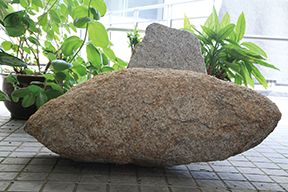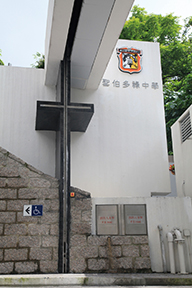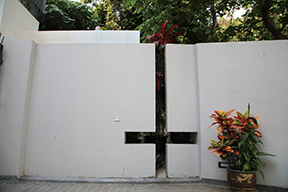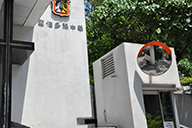|
|
|
KEYSAt the moment when Jesus declared Peter the Rock of the Church, he gave Peter the keys to the Kingdom of Heaven saying, "Whatever you bind on earth shall be bound in heaven; and whatever you loose on earth shall be loosed in heaven." (Mt 16:19) Jesus vested on Peter the jurisdiction and authority over the Kingdom of Heaven and the Church on earth. This is why the Church uses the symbol of two crossed keys to represent the Petrine office and the Papacy of St. Peter and the apostolic succession. |
  |
|
|
|
ROCKSFormerly known as Simon, Peter the head of the Apostles confessed that Jesus was the Messiah (Christ) and the Son of God. Jesus at once pointed out it was God the Father who revealed the truth to him, and Jesus then renamed him Peter (Rock), and said that he would build his Church on this Rock (Mt 16: 16-18). Peter thus became the first pontiff (Pope) of the Church. |
  |
CROSSThe cross was the instrument of execution on which Jesus was crucified. Nevertheless, for Christians, the cross is the icon of God's love towards humankind. As St. Paul said, "For the love of Christ impels us," (2 Cor 5: 14a) and "He indeed died for all, so that those who live might no longer live for themselves but for him who for their sake died and was raised."(2 Cor 5:15) and furthermore "I might live for God. I have been crucified with Christ; yet I live, no longer I, but Christ lives in me."(Gal 2:19b-20). And it was for these reasons that he always taught his followers, "We proclaim Christ crucified." (1 Cor 1:23). |
  |
INVERTED CROSSAccording to church tradition, a series of persecution of the Christians was provoked while Peter was preaching in Rome. When he was about to flee the city, Jesus appeared to him. Peter asked, "Lord, where are you going? (Domine, quo vadis?) " Jesus replied, "I am going to be crucified again in Rome." Peter understood Jesus was hinting to his martyrdom in Rome. Thus, Peter decided to stay in Rome to bear witness to his Lord with his life. When he was eventually nailed to the cross as Jesus had predicted, he urged to be crucified upside down for he deemed himself not worthy to be treated in the same way as his Lord, Jesus Christ, was once treated. |
  |
INCOMPLETE CROSSHidden behind the security guard room at the main entrance and visible only from its side is an L-shaped hollow on the wall. It symbolises an incomplete cross, perched below the large cross, from where the inverted cross is within sight. |
  |